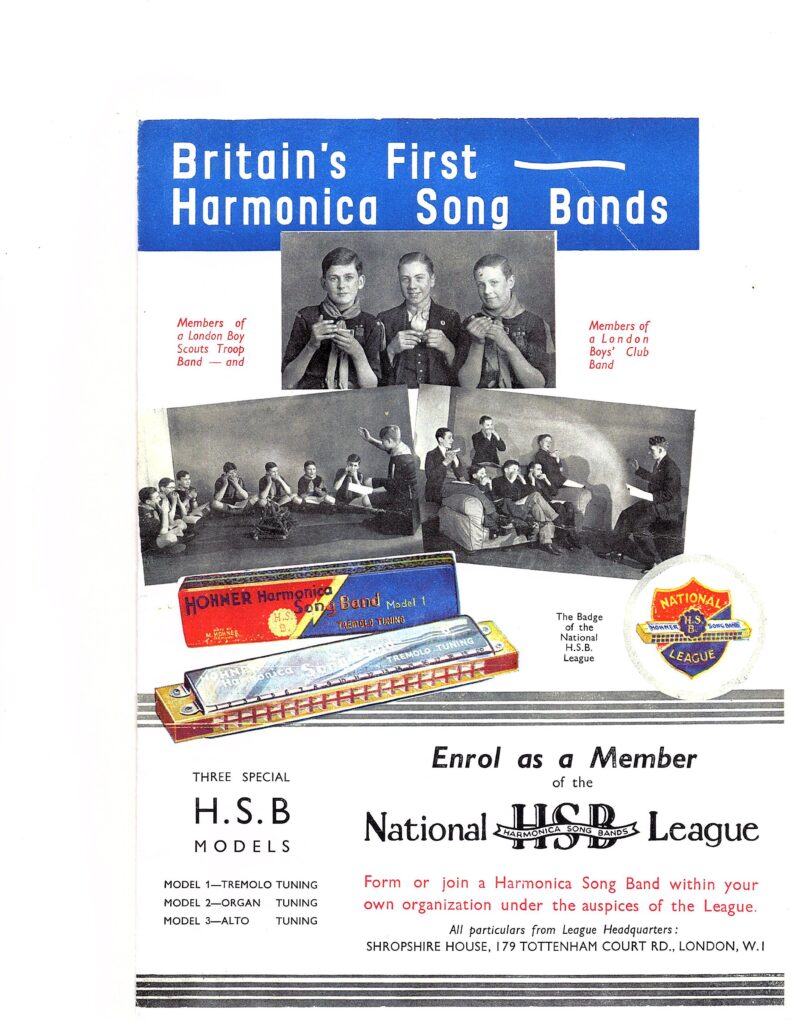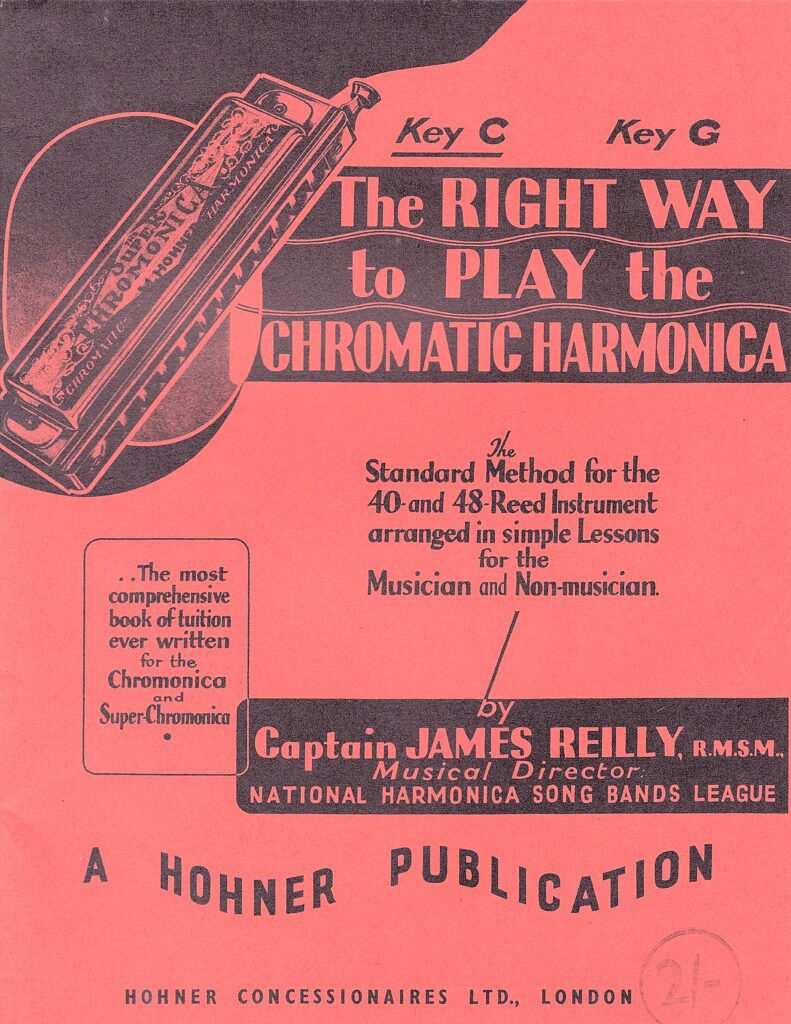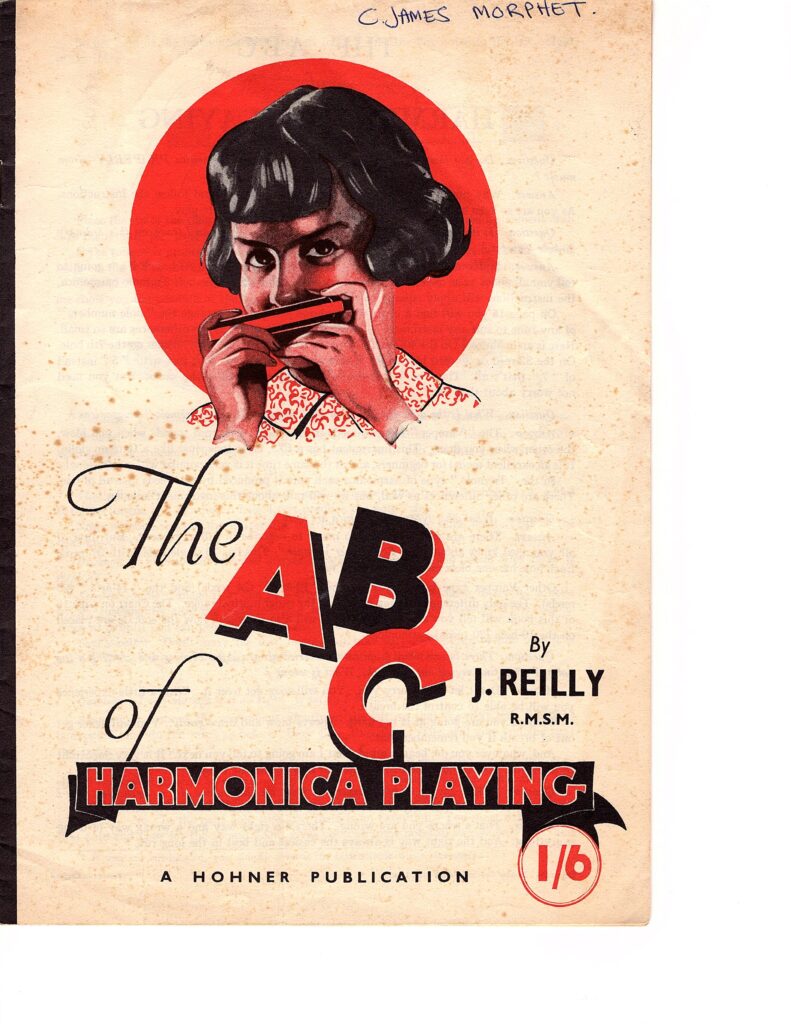HarmonicaUK started life as a Hohner marketing activity in 1935 and remained so until it was handed over to the members in 1981. It was first called the Hohner National Song Band League (SBL), then the National Harmonica League (NHL) in 1982 and finally HarmonicaUK in 2021.
Hohner set up in London
Hohner harmonicas had been sold in the UK for a long time but they set up their first representative, M. Michaelson, in the mid 1870s. This arrangement continued with moderate success either side of WW1 until 1929 when Hohner decided that they needed to a bigger presence and they set up Hohner Concessionaires Ltd. in London They brought in their own people to help run the business which was located first in Farringdon Road and then 21 Bedford Street, Strand, London, but it was still not successful enough
In 1930, Dr Otto Meyer was moved from the Hohner Hamburg Export office to reorganise the new company. He was a British National born in Bradford with an English mother and a German father. It was an inspired choice. In the next few years Dr Meyer encouraged the formation of accordion clubs and he realised the need for more tuition and music for the accordion and harmonica. He brought in specialists to provide this. Initially the concentration was on the accordion.
The birth of the Hohner Song Band League.

In 1935, Charles Millard was asked to create the National Harmonica Song Bands League (HSB) with the objective of the promoting the setting up of Song Bands among the youth organisations of Great Britain, Northern Ireland and the Irish Free State.
Tremolo, diatonic and, increasingly, chromatic harmonicas were the main instruments sold at that time.
Players were urged to join the League, get their membership card and then buy their HSB Harmonica and Song-Books.
Soon 100’s of harmonica bands had joined the membership.
Hohner began to publish a magazine “Accordion Times and Harmonica News” later that year. Jimmy Black became the editor.

The development of the teaching side
Dr Meyer had two pieces of luck at this time.

1 – Captain James Reilly, the father of Tommy Reilly, returned from teaching orchestral and harmonica band music in Canada and he accepted the position of Musical Director of the USB.
He wrote articles for the magazine and produced some of the best known tuition books for the harmonica.
2 – Larry Adler was brought from New York in 1934 by C B Cochran to star in his review ‘Streamline’ on the London stage, By 1935, interest in the chromatic was growing fast and Hohner brought out the “Larry Adler” model. Larry toured Britain playing in the main theatres and presenting prizes to players like the young Harry Pitch who won talent contests in local halls. Hohner’s biggest turnover came in1936.
Regional competitions took place and harmonica bands were set up in churches, schools, scouts and youth groups… Books on how to play the chromatic, and how to organise bands and perform in concerts were produced by the new Hohner Concessionaires.
The bands promoted by Hohner used HSB branded tremolos with orchestral, tenor and standard tunings plus vinetas for harmony. Drums and an accordion were sometimes included.

Chromatic soloists like Ronald Chesney and Morton Fraser were starting to emerge, but the HSB and the magazine, Accordion Times, closed down with the start of WW2 in1939. Hohner was regarded as a German Company although it had become a part of Hohner Inc. in New York. Dr Meyer was arrested but released about four months later after an appeal. He had built up stocks so Hohner managed to keep going through the war period.
It took quite a few years after the end of the war to get the business working normally again, but Dr Meyer had more plans for the HSB.
Back to History of HarmonicaUK home index page.
Forward to The History of HarmonicaUK – Part 2